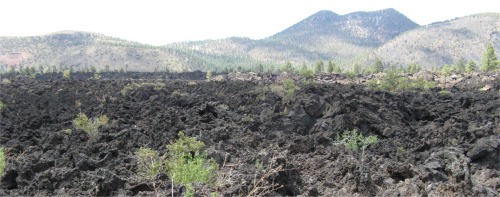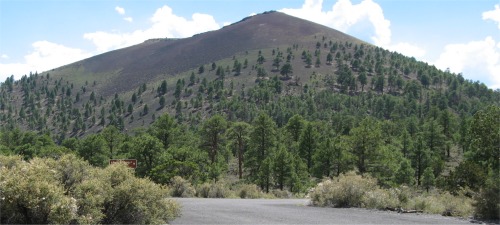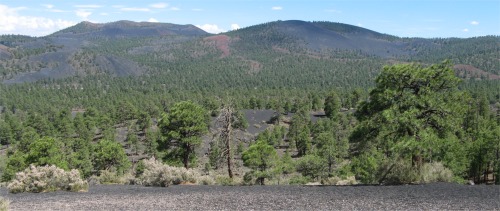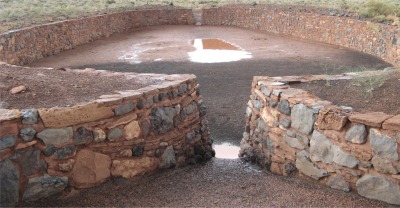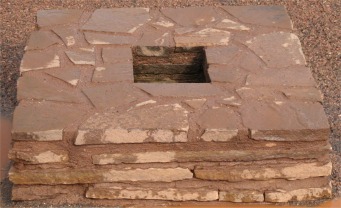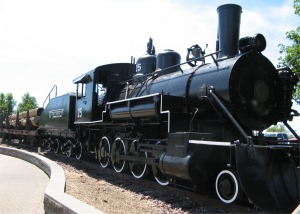 No. 25 Spent All its Working Life Hauling Timber around Flagstaff |
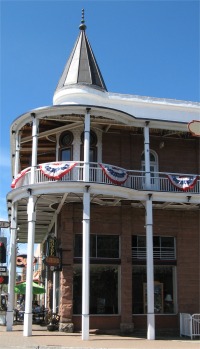 Weatherford Hotel, Flagstaff |
Flagstaff was one of the region's most attractive towns. Its historic downtown, an attractive ensemble of red-brick buildings housing bars and restaurants, dates from the 1890s, when the town developed as a lumber centre.
A party of emigrants came from Boston in 1876. Originally planning to settle in the Little Colorado River area near Winslow, they found the area already settled and decided to move on to California. On 4th July, 1876, the group camped at a small spring with the peaks looming overhead. In honour of the nation's centennial, they stripped a pine tree of its branches and bark and raised an American flog. When they moved on, their "flag staff" became a landmark for those who followed.
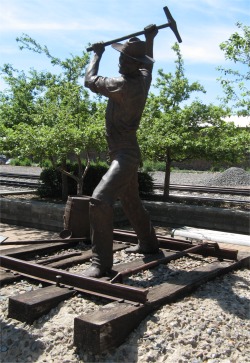 The Gandy Dancer |
The places I wanted to visit around Flagstaff were to the north and east, so I picked a high altitude campsite near Sunset Crater. Once I had secured a pitch, I drove to the Sunset Crater area. Sunset Crater was a volcanic cinder cone located north of Flagstaff. The crater was within the Sunset Crater Volcano National Monument, and was the youngest in a string of volcanoes (the San Francisco volcanic field) that was related to the nearby San Francisco Peaks.
|
|
|
|
|
Damage from hikers forced the National Park Service to close a trail leading to the crater. However, I did manage to hike up to Lenox Crater. Like all the ground for miles around (including the campsite), the trail was covered in a black, pumice like blanket of volcanic ash. The crater itself was more of a depression due to erosion effects. From above, the crater appeared to be like an asphalt covered car park with the odd tree or two scattered across it, and pine needle blankets under the trees. I also had a short walk across the Bonito Lava Flow. This was not ash like at all, but hard, sharp basalt in a myriad of grotesque shapes. The lava would have oozed out of vents and flowed where it could before cooling. The ash was spewed out of the volcanic cone by hot gasses suddenly releasing their pressure.
Further along past Sunset Crater, an overlook gave a magnificent view of many Cinder Hills. The crater and surrounding area was maintained by the National Park Service in close conjunction with nearby Wupatki National Monument. In the late 1920s, a Hollywood film company attempted to detonate large quantities of explosives inside Sunset Crater in order to simulate a volcanic eruption. Public outcry over this plan led in part to the proclamation of Sunset Crater Volcano National Monument by President Herbert Hoover in 1930.
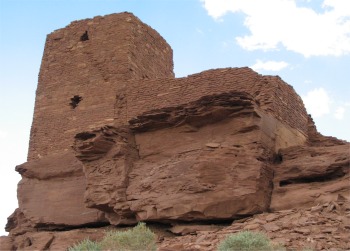 Wukoki Pueblo |
A short drive away was the Wupatki Pueblo, with 100 rooms, a tower, community room, and ceremonial ballcourt. This village may have been just as monumental to the travelers of 800 years ago as it was to me today.
 Wupatki Pueblo |
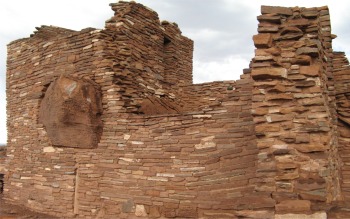 Clever Architectural Integration |
Because of the work involved in building a ballcourt and the numbers that had been found (over 200 in Arizona), ball games may have been an important part of life for the people of Wupatki and their southern neighbours. The ballcourt here was 78' wide, 102' long, with 6' high walls.
Near the ballcourt was a blowhole. A blowhole was a crevice in the earth's crust that appeared to breathe, sometimes in and at other times out. This was one of several found in the Wupatki area. It was connected to an underground passage, of unknown size, depth and complexity, and was also known as an earthcrack. Earthcracks resulted from earthquake activity in the Kaibab Limestone bedrock, and had enlarged over time.
Archaeologists had yet to uncover any evidence of prehistoric structure or uses at the blowhole. Its connection to the Wupatki Pueblo remained a mystery.
|
|
My next ports of call were the Nalakihu and Citadel Pueblos. "Nalakihu" was a modern Hopi name, "House Outside the Village". The Citadel afforded magnificent views, and the remains of eight pueblos could be seen from the high outcrop on which it was perched. The whole area would have been a busy farming community at one time. By 1250, the Citadel area was abandoned.
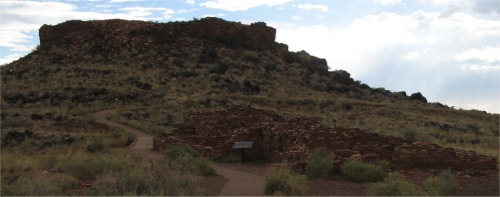 Citadel and Nalakihu Pueblos |
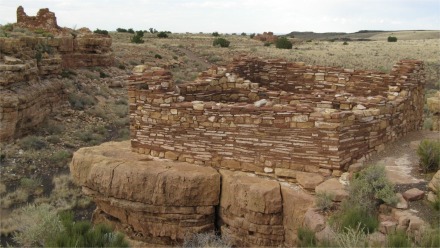 Box Canyon Dwellings and Lomaki Pueblo |
While I was in Flagstaff, and it was by now dark, I ate. The waitress had the most amazing set of white, straight lined, perfect teeth I had ever seen. We had a banter about England, then football. She was amazed I didn't know who won the World Cup, she presumed all English blokes were fanatics. In the end she told me all the details about the final. I can't say I was bothered, but was impressed that she knew all this. I learned more about Americans each day.


